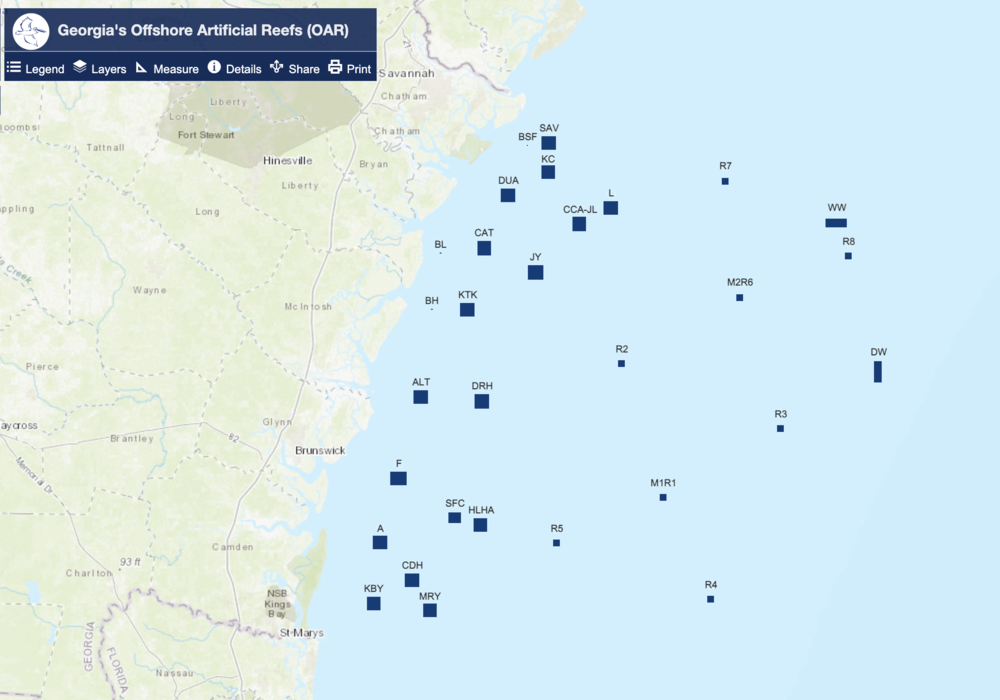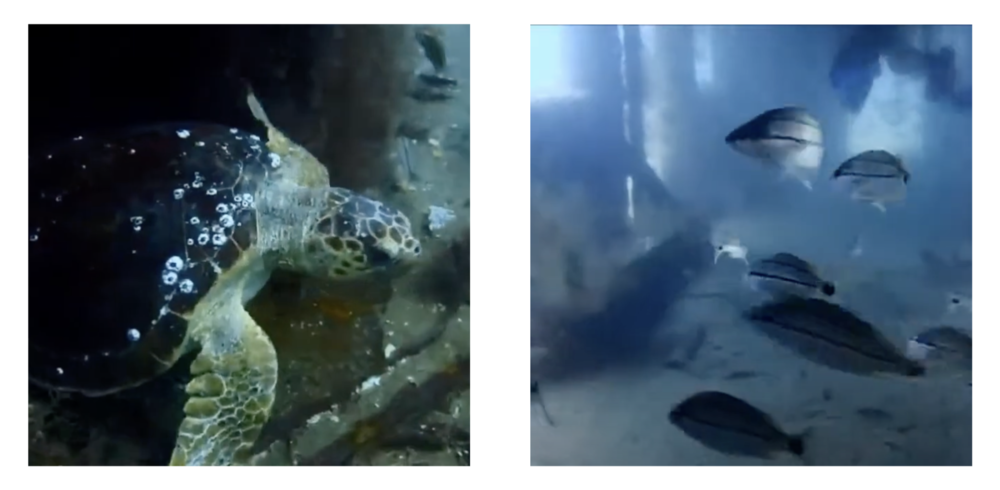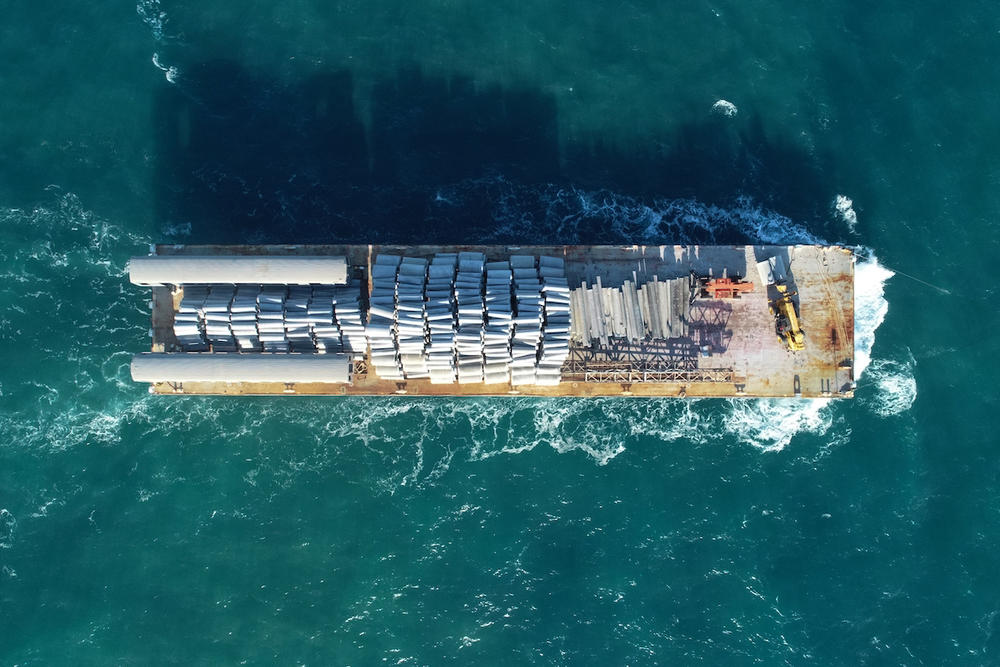
Caption
This Georgia DNR Map shows the locations of its artificial reef system dating back to the 1970s.
Credit: Georgia Department of Natural Resources Coastal Resources Division
|Updated: January 4, 2024 8:35 AM
Concrete materials and retired MARTA railcars are placed at Artificial Reef L about 23 nautical miles east of Ossabaw Island on Thursday, Dec. 21, 2023.
LISTEN: Cameron Brinton, a marine biologist with the Georgia Department of Natural Resources' Coastal Resources Division, explains how vessels are deployed to artificial reefs.
—
Two retired Metro Atlanta Rapid Transit Authority (MARTA) cars will have different passengers now that they're on the sandy bottom of the Atlantic Ocean.
The vehicles, deployed to Artificial Reef L about 23 nautical miles east of Georgia's Ossabaw Island on Dec. 21, 2023, may soon be home to grouper, snappers, sea bass, and amberjack as well as “bluewater” fish such as tuna and wahoo.

This Georgia DNR Map shows the locations of its artificial reef system dating back to the 1970s.
The vehicles joined a colony of already settled battle tanks, barges, tugboats and 1,000 tons of discarded concrete culvert pipe about 65 feet beneath the surface. According to the Georgia Department of Natural Resources Coastal Resources Division, Artificial Reef L was created in 1976 as part of a network of 32 offshore reefs. Reef creation off Georgia’s coast began under DNR’s predecessor agency in 1970 and today includes 460 individual deployment sites inside the 32 reefs.
Georgia's natural reefs are rock-based instead of coral, so manmade reef materials like steel and concrete found in subway cars and pipe offer the appropriate hardness for biological material such as algae and barnacles to grow.

Sea turtles and fish are shown in a 2015 video filmed inside a previously deployed subway car at Artificial Reef L off Georgia's coast.
Cameron Brinton, a marine biologist with DNR’s Coastal Resources Division, said the partnership with MARTA has been in the works for a few years.
"We are so glad to have these MARTA cars offshore now to provide essential fish habitat, diving opportunities, and another great offshore fishing location,” he said in a statement. "Within a few months to a year, we expect corals, sponges, and other encrusting organisms to form on the railcars, and the relief and structure of the cars will provide a habitat for fish to spawn and find refuge, which can be sparse off Georgia’s coast due to the low-sloping, sandy geology of the near and offshore undersea environment.”

A barge carrying concrete materials and retired MARTA railcars to be placed at Artificial Reef L about 23 nautical miles east of Ossabaw Island on Thursday, Dec. 21, 2023.
Thomas Worthy, chairman of the MARTA Board of Directors, said the partnership was a "tangible thing" the organization could do to "exhibit our dedication to sustainability in a statewide platform.”
Worthy added that the Georgia DNR project to build and maintain artificial reefs is "evidence of government working together" and gives Atlanta the ability to participate in "taking care of coastal resources for future generations of Georgians.”